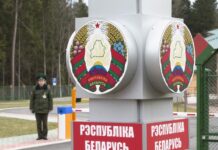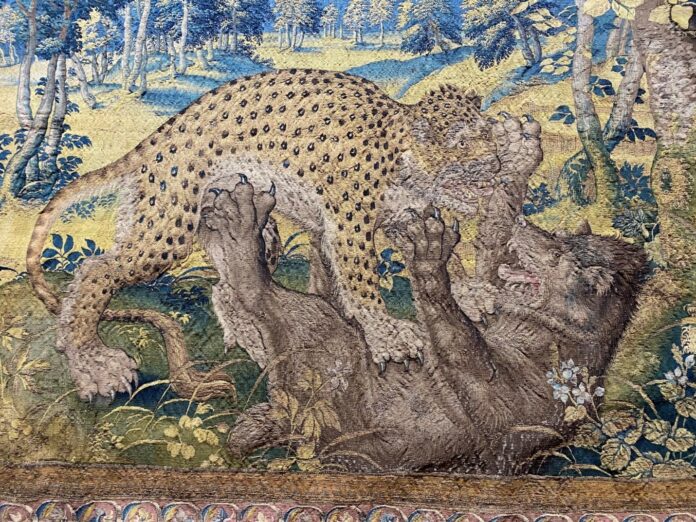
From May 3 to July 7, Lithuania’s National Museum – Palace of the Grand Dukes of Lithuania invites visitors to see one of the most valuable and unique exhibitions ever shown in this country, as it welcomes the tapestry collection of Žygimantas Augustas (Sigismund Augustus), Grand Duke of Lithuania and King of Poland. The tapestries, woven 500 years ago, are on loan to Lithuania from the Wawel Royal Palace in Poland on the occasion of Vilnius’ 700th anniversary.
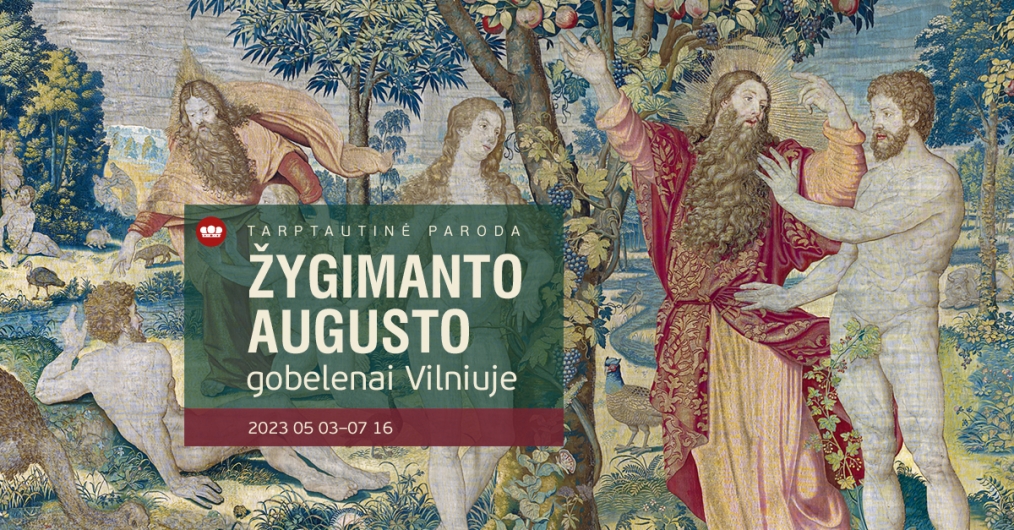 The tapestry collection of the King of Poland and Grand Duke of Lithuania Sigismund Augustus (1548–1572), is distinguished for its high level of artistry, historical significance, unparalleled scope, legendary material value and turbulent destiny, and is truly a diamond in the context of European art collections. It is an actual historic relic of the early Polish-Lithuanian state, equalling the insignia of rulers in terms of its symbolic significance. In current-day Poland, Sigismund Augustus’ tapestries are named as the most valuable historic collection and the most important exhibit at the Wawel Royal Castle in Krakow, drawing inquisitive audiences from around the world.
The tapestry collection of the King of Poland and Grand Duke of Lithuania Sigismund Augustus (1548–1572), is distinguished for its high level of artistry, historical significance, unparalleled scope, legendary material value and turbulent destiny, and is truly a diamond in the context of European art collections. It is an actual historic relic of the early Polish-Lithuanian state, equalling the insignia of rulers in terms of its symbolic significance. In current-day Poland, Sigismund Augustus’ tapestries are named as the most valuable historic collection and the most important exhibit at the Wawel Royal Castle in Krakow, drawing inquisitive audiences from around the world.
The entire Sigismund Augustus tapestry collection consisted of around 160 artistic textiles, of which 140 exist today. The tapestry collection is made up of large format works depicting biblical scenes, as well as textiles bearing the ruler’s initials SA and the coats of arms of the Kingdom of Poland and the Grand Duchy of Lithuania – the White Eagle and Vytis, verdures with animals and plants, as well as other textiles for the decoration of window openings, doorways and furniture.
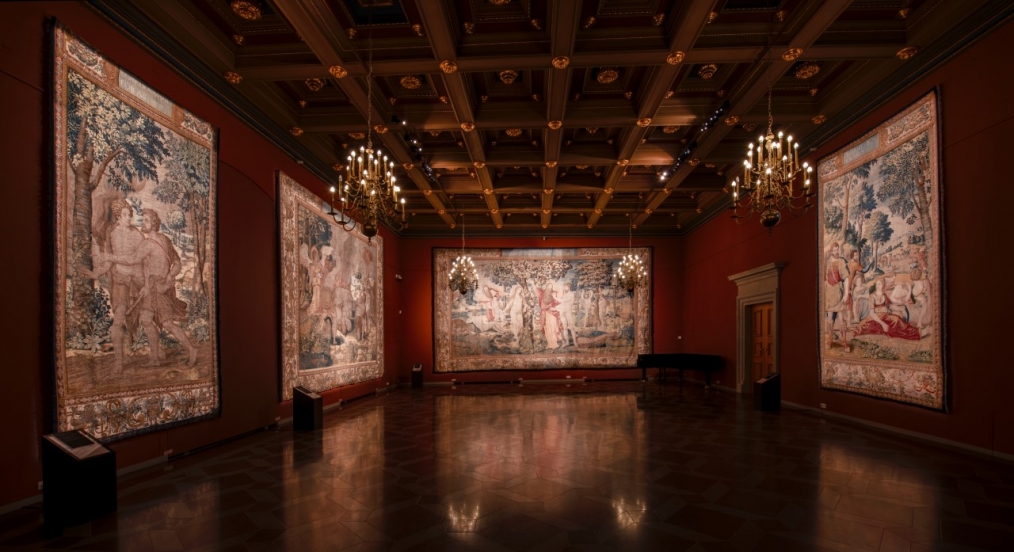 The tapestries were created circa 1550-1560, over the course of about ten years. The first two series of biblical tapestries were completed in 1553, when they decorated the halls of Wawel Castle on the occasion of Sigismund Augustus’ marriage to Catherine Habsburg, delighting and leaving the gathered guests in awe at their beauty. The tapestries were created at the most important artistic textile weaving centre in Europe of the day – in the capital of the Spanish Netherlands, Brussels. The artists and weaving factories of this city supplied monarchs, bishops and magnates with the most expensive textiles displaying the highest craftsmanship. Tapestry prices were enormous, costing significantly more than paintings. To be able to acquire his tapestries, Sigismund Augustus sought a loan, the size of which equalled the expenses for a year-long campaign in the Livonian War.
The tapestries were created circa 1550-1560, over the course of about ten years. The first two series of biblical tapestries were completed in 1553, when they decorated the halls of Wawel Castle on the occasion of Sigismund Augustus’ marriage to Catherine Habsburg, delighting and leaving the gathered guests in awe at their beauty. The tapestries were created at the most important artistic textile weaving centre in Europe of the day – in the capital of the Spanish Netherlands, Brussels. The artists and weaving factories of this city supplied monarchs, bishops and magnates with the most expensive textiles displaying the highest craftsmanship. Tapestry prices were enormous, costing significantly more than paintings. To be able to acquire his tapestries, Sigismund Augustus sought a loan, the size of which equalled the expenses for a year-long campaign in the Livonian War.
Easily transported from one place to another, tapestries were referred to as ”mobile frescoes of the North”, used to evoke the impression of grandeur and opulence in castles, palaces and cathedrals, while exalting their owners. They were viewed not just as works of fine art, but also as embodiments of the greatness of a ruler, teachers of the Bible stories, resources for learning about flora and fauna, and the guardians of deep symbolic meanings.
The drawings for Sigismund Augustus’ tapestries and the actual weaving were executed by the most acclaimed masters of the day. Tapestries featuring wool and silk thread, embellished with gold and silver metallic thread, were woven in as many as eight workshops in Brussels.
The tapestries of Sigismund Augustus were bequeathed to his sisters in his last will and testament, and following their deaths – to the Polish-Lithuanian Commonwealth. The priceless textiles were kept in the treasury of the Polish Kingdom. After the Third Partition of the Commonwealth in 1795, the textiles were plundered and taken away to Russia; at this point, some were damaged or even destroyed. Bolshevik Russia returned the tapestries to Poland in accordance with a treaty in 1921, from which time they adorned the walls of Wawel Palace in Krakow. When Nazi Germany attacked Poland in 1939, Sigismund Augustus’ tapestries were evacuated to Canada as a national relic. It was not until 1961 that the invaluable collection was returned to Poland, to the Wawel Castle.
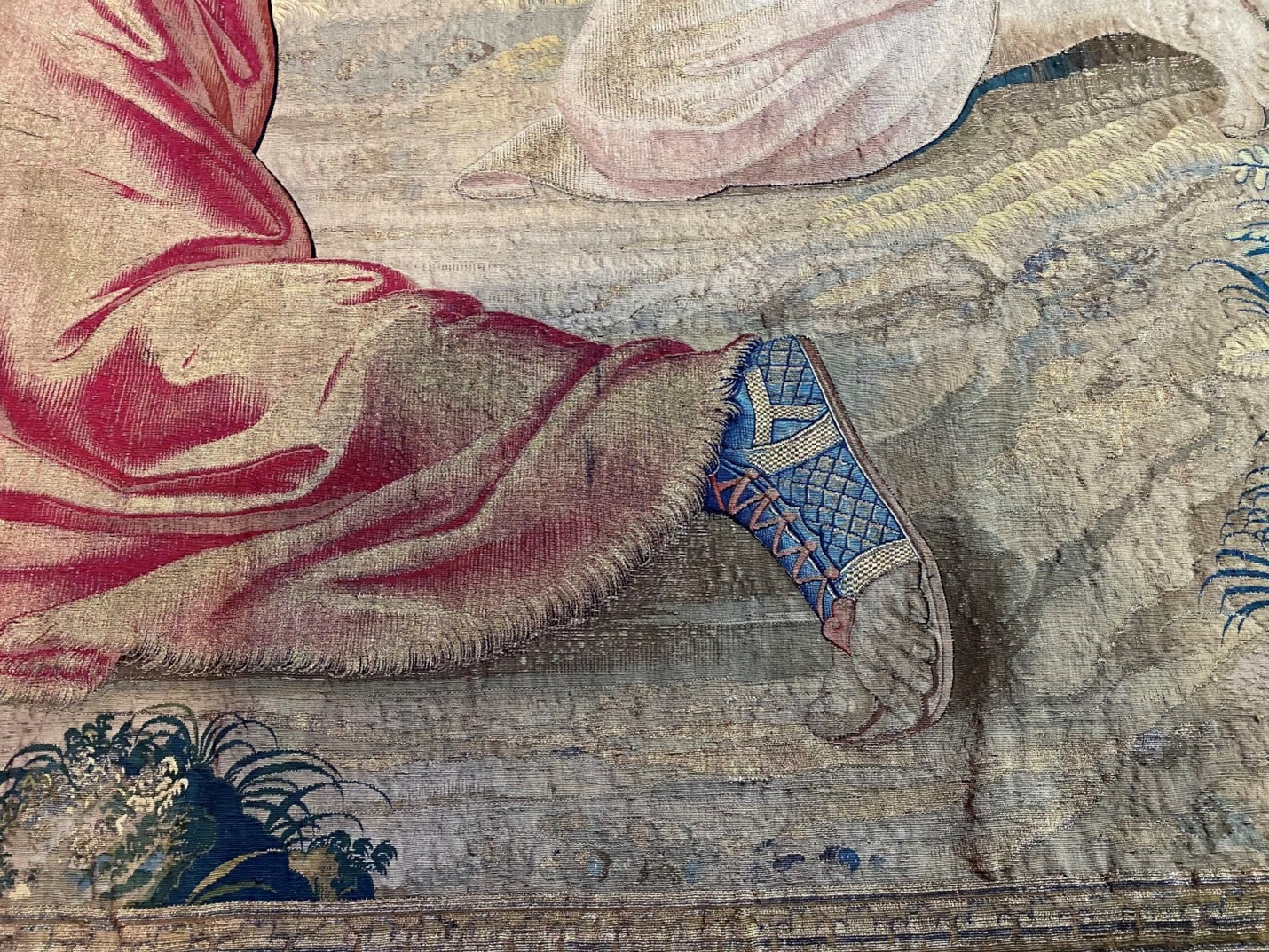 This exhibition presents all groups from the collection of Sigismund Augustus’ tapestries. Visitors can see 37 textiles – 9 tapestries with biblical scenes of the First Parents, Noah and construction of the Babel Tower, 10 verdures, 6 tapestries with the ruler’s initials, 10 textiles with the coats of arms of Lithuania and Poland and 2 smaller tapestries. Some of them have been integrated into the palace interiors exposition.
This exhibition presents all groups from the collection of Sigismund Augustus’ tapestries. Visitors can see 37 textiles – 9 tapestries with biblical scenes of the First Parents, Noah and construction of the Babel Tower, 10 verdures, 6 tapestries with the ruler’s initials, 10 textiles with the coats of arms of Lithuania and Poland and 2 smaller tapestries. Some of them have been integrated into the palace interiors exposition.
A tapestry collection of this scale has never before been displayed beyond the walls of Wawel, and represents an exceptional gesture of the Wawel Royal Castle’s and Poland’s attention and good-will towards Lithuania, lending it to Vilnius on the occasion of its 700th anniversary. It is also one of the most complicated, largest and most expensive projects undertaken in the history of museology in Lithuania.
This is not the first time Sigismund Augustus’ tapestries are in Vilnius. It is believed that the first wife of Sigismund Augustus, Elisabeth Habsburg, brought her dowry tapestries to the palace in the Lithuanian capital in 1544. Sigismund Augustus’ tapestries decorated the Vilnius palace on various special occasions from the mid-16th to the mid-17th centuries.
Sigismund Augustus’ tapestry collection is considered one of the most valuable collections of monumental artistic textiles in the world. It offers an excellent representation of European Renaissance culture, artistic ties, the representational aspirations of the last ruler of the Gediminid-Jagiellon dynasty – the King of Poland and Grand Duke of Lithuania – and the traditions of patronage. This textile collection of the ruler of the joint state is also a further reminder of the period when Krakow and Vilnius truly flourished – the Renaissance.








